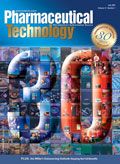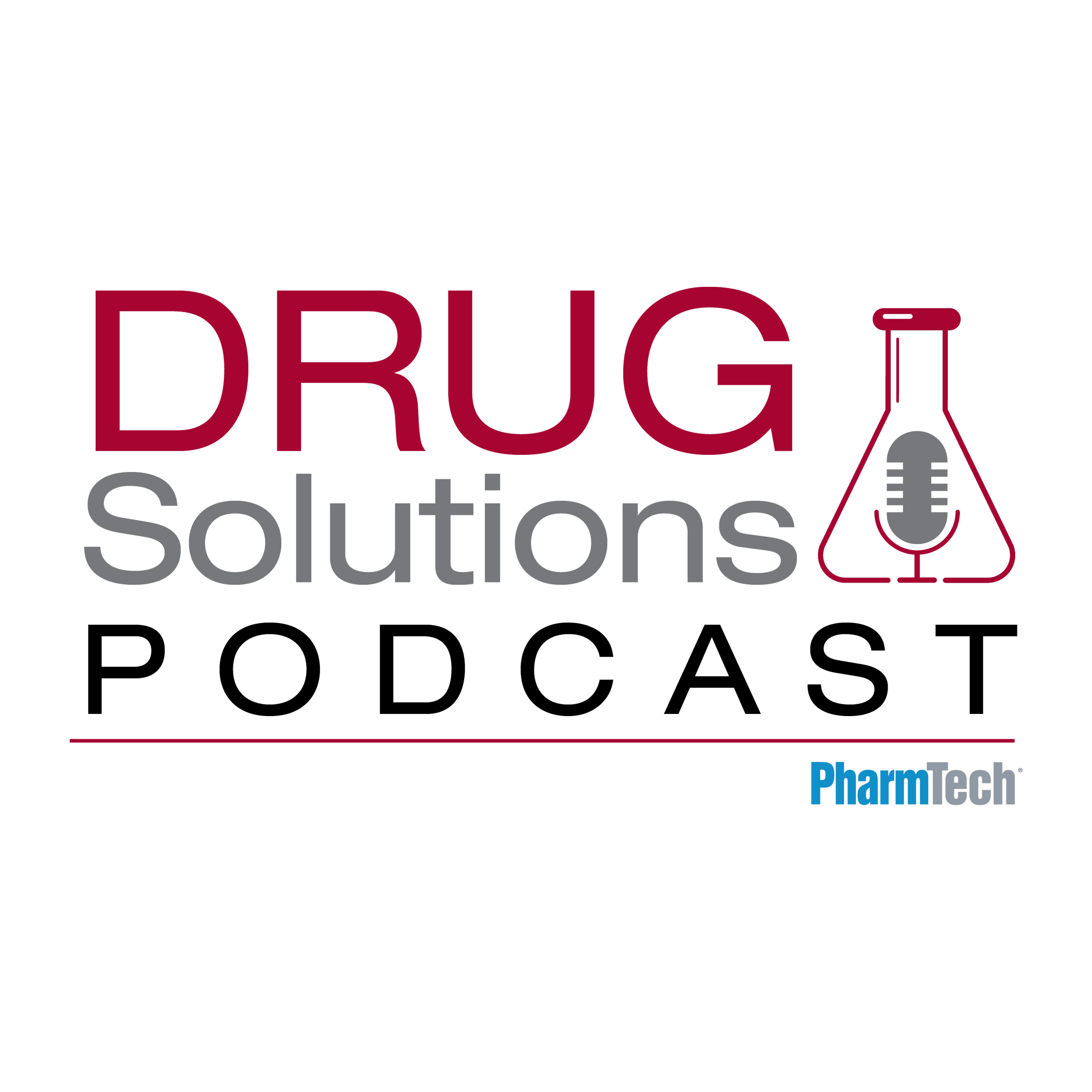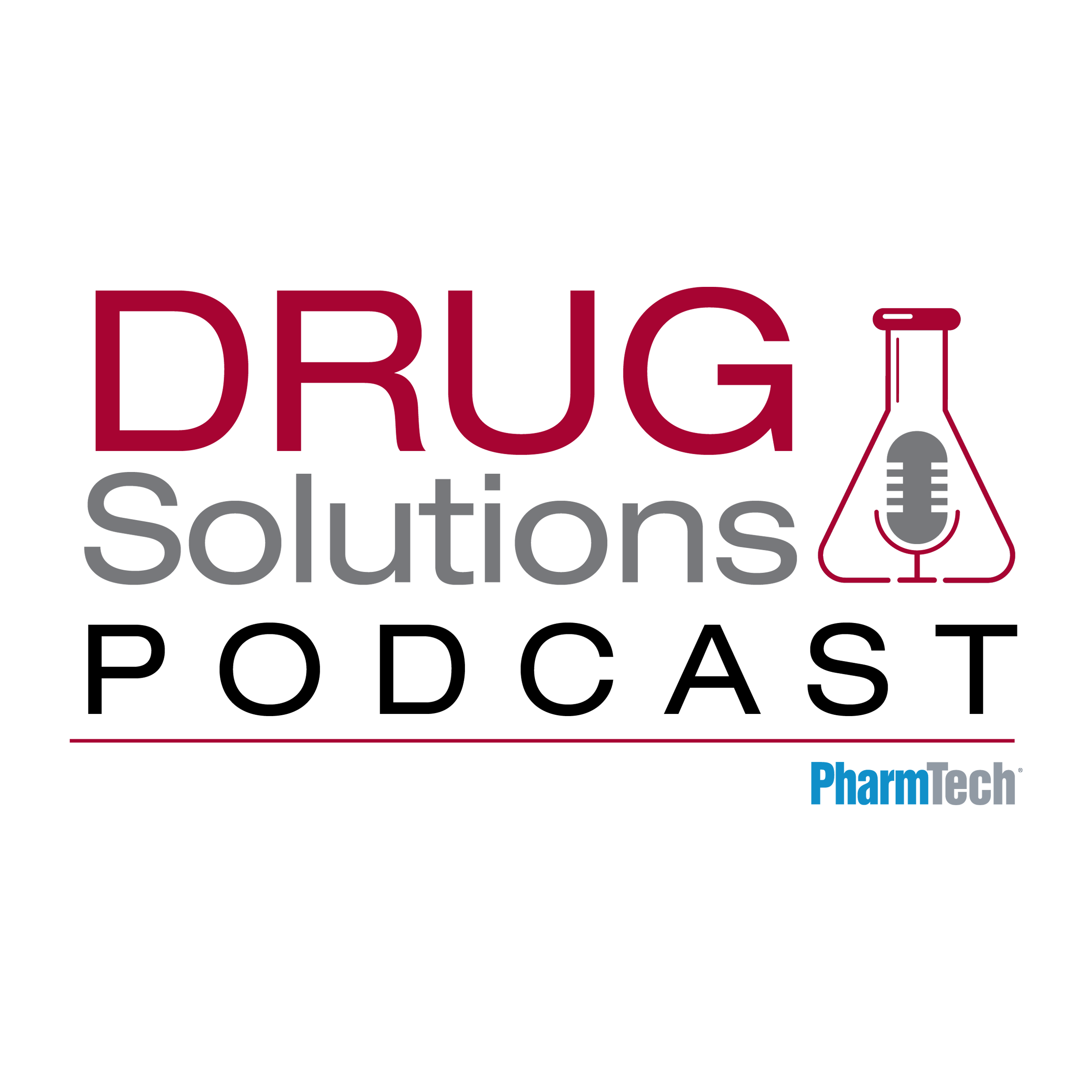Publication
Article
Pharmaceutical Technology
The Evolution of FDA's Role in Ensuring Product Quality
The quality of a drug product is an essential element of drug safety and efficacy. With a statutory mission to provide safe and effective medications to the public, the US Food and Drug Administration has always focused on drug quality. The authors summarize the history of FDA's role in ensuring product quality and its role in shaping risk-based approaches to this goal.
People have always been concerned about the quality of the products they use—especially those products that are consumed or used for medicinal purposes. Regulation of medicinal products began with inspection of imported drugs in 1848 when Congress passed the Drug Importation Act, requiring the US Customs Service to stop entry of adulterated drugs from overseas. The Federal Food and Drugs Act introduced in 1880 and later authorized by Congress in 1906, prohibited misbranded and adulterated foods and drugs in interstate commerce. There were many shortcomings with the Federal Food and Drugs Act such as evaluating the safety and efficacy of drug products, however, and FDA did not have enough regulatory discretion to carry it out; a complete revision was recommended.
Empowering FDA and shaping regulation
It was not until the sulfanilamide elixir disaster that killed 107 people, many of them children, 31 years later in 1937 that Congress moved toward authorizing a new law. In 1938, President Franklin D. Roosevelt signed the Federal Food, Drug, and Cosmetic Act (FD& C Act), providing the basis to establish safety of pharmaceuticals. The act provided FDA with new enforcement provisions, including extending control to cosmetics and therapeutic devices, and authorized standards for the identity and quality of food and drugs. Although the main focus was to ensure safety of therapeutic products, quality soon became a priority as drug products with compromised quality were often found to be unsafe for human use (1). It is significant to note that the FD&C Act was a consequence of product quality issues involving an excipient in drug safety (diethylene glycol).

Milestone. 30 years of Pharmaceutical Technology
FDA's primary goal is to ensure that safe and effective quality medicines are available to the American public. Quality issues, however, arise across myriad groups involved in the process between a drug's creation and its placement on the market, including manufacturers, distributors, and repackagers. With the 1993 launch of a multiple adverse event reporting system (AERS) called MEDWATCH, designed for voluntary reporting of problems with medical products to be filed with FDA by health professionals, it became mandatory for drug manufacturers to report any unexpected and serious adverse events to the agency in a timely manner (2). With the help of the AERS database, the agency recognized several safety issues related to drug product quality. As a result, there were numerous recalls or seizures of drug products by the agency for failure to comply with the quality standards set forth (2).
Depending upon the severity of adverse health consequences, recalls are divided into three classes. Class I is the most serious, sometimes based on death; Class II is based on temporary or medically reversible health consequences; and Class III is based on low likelihood of health consequences. Instead of recalls, market withdrawal can also occur in which the firm removes the product from the market or corrects the violation (3). Numerous voluntary recalls by manufacturers have resulted from failure to produce the drug products according to quality standards. Several times, all the drug products from a manufacturer were recalled because of substandard manufacturing conditions in the firm. (4, 5).
The 1951 Durham-Humphrey Amendment ensured that a prescription drug dispensed without a prescription be treated as a "misbranding" by FDA (6). The thalidomide crisis of 1960–61 in which thousands of babies were born with phecomelia deformities, mostly in Europe because the product was not approved in the United States, led to further amendments for drug effectiveness studies. Several products were grandfathered for effectiveness studies by the sponsor, and FDA was authorized to apply the 1962 Drug Efficacy Study Implementation amendment to those drugs. The amendment to the FD&C Act, called the Kefauver-Harris Amendment, also tightened safety standards (7). Another significant act of the last 30 years was promulgated as the Hatch-Waxman Act (1984) (8). This act allowed companies to market generic versions of approved brand products. As a result, preclinical and clinical studies were waived for many generic products.
A generic product is deemed comparable to the brand product if the dosage form, strength, route of administration, quality and performance characteristics, and intended use are deemed similar. FDA's Orange Book lists all agency-approved products as new drug applications (NDAs), abbreviated new drug applications (used for generics), and nonmonograph over-the-counter products. It also indicates when or whether a product is substitutable for an NDA.
The next significant milestone was the first extension of the Prescription Drug User Fee Act (PDUFA II) in 1997, originally enacted in 1992 (PDUFA I), which allowed for the addition of review staff to enable a considerable reduction of approval times for new drugs (9). It is estimated that the approval time for a new molecular entity went from an average of 33 months to 13 months. PDUFA III, revised in 2002, was enacted with the aim of shrinking that time to a median of six months for a priority NDA and 10 months for a standard NDA (10).
The Pediatric Research Equity Act (PREA) that became effective in December 2003 called for a mandatory pediatric study (or deferral or waiver of the requirement) for new active ingredients, dosage forms, dosing regimens, route of administration, and indications (11). The act was effective retroactively for products approved after 1999. Finally, the Best Pharmaceuticals for Children Act enacted in 2002, provides six months of marketing exclusivity for certain voluntary pediatric studies (12).
Determining a risk-based approach for CGMPs
Despite all the strides in regulatory measures, producing drug products with built-in quality remains a challenge due to formulation and process variability. In 2004, FDA launched its white paper on current good manufacturing practice (CGMP) for the 21st century to highlight challenges in manufacturing processes and end-product quality for drugs and biologics (13). The CGMP initiative sought to focus on the greatest risks to public health in manufacturing procedures, ensure that the process and product quality standards do not impede innovation, and apply a consistent approach to these issues across the agency (1). The primary component was to modernize quality management techniques, including implementation of quality systems approaches, in all aspects of pharmaceutical production and quality assurance (13). As described below, FDA launched the process analytical technology (PAT) initiative to address some of the manufacturing issues for controlling and confirming product quality.
Quality by design and PAT. FDA discussed quality by design (QbD) and PAT for a long time, but the first draft guidance on the subject was not published until 2003. The idea behind the QbD approach is for manufacturers to use processes that consistently generate products of predetermined quality. With this in mind, improved quality and efficiency are expected from reduction of cycle times using on-, in-, or at-line measurements and controls. Other positive impacts include the prevention of rejected product and waste, real-time product release, increased use of automation, and facilitation of continuous processing using small-scale equipment, resulting in improved energy and material use as well as increased capacity.
PAT is an integral component of QbD. It is a system for designing, analyzing, and controlling manufacturing processes based on an understanding of the scientific and engineering principles involved and identification of the variables that affect product quality. The PAT initiative is consistent with the belief that quality cannot be tested into products, but should be built-in or by design. According to the FDA draft guidance, there is a desired state of pharmaceutical manufacturing:
- Product and process specifications are based on a mechanistic understanding of how formulation and process factors affect product performance
- Quality assurance is continuous and real time
- Relevant regulatory policies and procedures are tailored to accommodate the most current level of scientific knowledge
- Risk-based regulatory approaches recognize both the level of scientific understanding and the capability of process control related to product quality and performance (14).
Effective QbD implementation is based on the scientific understanding of the chemical and mechanical properties of all elements of a drug product. A prerequisite for process design, QbD provides for consistent quality of a drug product by ensuring that all characteristics of the product's components are well determined. The next step is to identify the processing variables that control the relevant properties of the drug. From a manufacturing perspective, QbD implementation involves the design based on a thorough scientific understanding of the solid-state properties and stability of the components of the drug product at critical quality attributes throughout manufacturing. Then, measurement and control of the critical parameters integrate a broad spectrum of analytical technologies interfaced to production plant controls and incorporate them into standard procedures.
Documentation of QbD during companies' preinvestig-ational new drug meeting, end of Phase II meeting, and in regulatory submissions with FDA might allow early review and analysis of the chemistry, manufacturing, and control (CMC) section of new or generic drug applications by the agency. Addressing issues of concern and further QbD can result in classification of the drug substance and drug process manufacturing process as low, medium, or high risk. In some cases, this approach is expected to result in a less comprehensive inspection or to eliminate the preapproval inspection altogether.
With regard to chemistry and manufacturing controls, numerous guidance documents have come out in recent years related to PAT as well as to product development (ICH Q8) (15) and quality risk management (ICH Q9) (16). There is also now a guideline on quality systems (ICH Q10) (17). These guidances from the International Conference on Harmonization (ICH) address various QbD elements of product development, including an understanding of all the potential variables and those interactions that are likely to affect product quality. ICH Q9 specifically addresses risk-based strategies to determine the likely failures and their consequences on product development and manufacturing. It is proposed that a new tripartite guideline, ICH Q10, be developed describing the modern quality systems needed to establish and maintain a state of control that can ensure the realization of a quality drug product and facilitate continual improvement over the lifecycle of a drug product (17).
Moving forward
Going forward, it would be beneficial for both FDA and industry to have a maximally efficient, agile, flexible pharmaceutical manufacturing sector that reliably produces high-quality drug products without extensive regulatory oversight (18). 21 CFR 314.70 is effective in ensuring quality for consumers; however, it doesn't recognize recent manufacturing developments such as the process and product understanding (19). FDA is currently evaluating how it might revise its regulations to accomodate risk-based approaches that take into account an understanding of the manufacturing process, including prior knowledge of similar products, and overall quality systems to provide an enhanced risk-based approach to the CMC regulatory process, which would reduce the number of supplements (20).
FDA is also working to improve the regulatory process to encourage innovation. For example, the agency published "Innovation or Stagnation? Challenge and Opportunity on the Critical Path to New Medical Products," in 2004, examining the critical path needed to bring therapeutic products from discovery to market to make them available to those in need as quickly as possible (21). The so-called Critical Path Initiative also emphasizes built-in quality in products and encourages innovators to bring out the quality products with collaborations from regulatory agencies. It is an attempt to focus attention on modernizing the evaluation of safety, efficacy, and quality of medical products as they move from product selection (discovery) to marketing (delivery).
FDA has a significant role in enhancing the quality of pharmaceuticals, and looking ahead, the agency is exploring new paradigms of manufacturing that assure continued product quality (19). The evolution of quality systems and manufacturing science with control strategy promises a new approach toward ensuring pharmaceutical product quality. Major initiatives and guidelines undertaken by FDA will require industry and regulators to confront the assumptions that have guided quality assessment in the past and to move toward more novel approaches such as QbD and quality systems.
Rakhi B. Shah, PhD, is a pharmacologist in the US Food and Drug Administration's Division of Product Quality Research at the Center for Drug Evaluation and Research. Mansoor A. Khan*, PhD, is director of the same division and a member of Pharmaceutical Technology's editorial advisory board, 10903 New Hampshire Avenue, LS Building 64, Silver Spring, MD 20993-002, tel. 301.796.0016, mansoor.khan@fda.hhs.gov
*To whom all correspondence should be addressed.
The views represented in this article are the authors' own.
Where were you 30 years ago?
Mansoor was aspiring to be a pharmacy student. He joined the BS in pharmacy program at Kakatiya University, India, in 1977. Rakhi was not yet born.
References
1. FDA, "Milestones in US Food and Drug Law History," (Aug. 2005), www.fda.gov/opacom/backgrounders/miles.html (accessed June 7, 2007).
2. FDA, "How to Report Problems with Products Regulated by FDA," (Dec. 2006), www.fda.gov/opacom/backgrounders/problem.html (accessed June 7, 2007).
3. FDA, "Background and Definitions," www.fda.gov/oc/po/firmrecalls/recall_defin.html (accessed June 7, 2007).
4. FDA, "Medical Products Safety Information 2005," www.fda.gov/medwatch/safety.htm (accessed June 7, 2007).
5. FDA, "Medical Products Safety Information 2000," www.fda.gov/medwatch/safety.htm (accessed June 12, 2007).
6. United States Code, Title 21 (Durham-Humphrey Amendment, 1951), Section 301.
7. United States Code, Title 21 (Kefauver-Harris Amendment, 1962), Section 360.
8. Public Law 98–417 (Drug Price Competition and Patent Term Restoration Act, 1962).
9. United States Code, Title 21 (Prescription Drug User Fee Act, 1997), Section 310.
10. United States Code, Title 21 (Prescription Drug User Fee Amendments, 2002), Section 310.
11. Public Law 108–155 (Pediatric Research Equity Act, 2003).
12. Public Law 107–109 (Best Pharmaceuticals for Children's Act, 2002).
13. FDA, "Pharmaceutical CGMPS for the 21st Century—A Risk-based Approach: Second Progress Report and Implementation Plan," (2003), www.fda.gov/cder/gmp/2ndProgressRept_Plan.htm (accessed June 12, 2007).
14. FDA, PAT—A Framework for Innovative Pharmaceutical Manufacturing and Quality Assurance, Guidance for Industry (Aug. 2003), www.fda.gov/Cder/guidance/5815dft.htm (accessed June 7, 2007).
15. International Conference on Harmonization and US Food and Drug Administration, Q8: Pharmaceutical Development (Nov. 2005), www.ich.org (accessed June 7, 2007).
16. International Conference on Harmonization and US Food and Drug Administration, Q9: Quality Risk Management (November 2005), www.ich.org (accessed June 7, 2007).
17. International Conference on Harmonization and US Food and Drug Administration, Q10: Pharmaceutical Quality System (May 2007), www.ich.org (accessed June 7, 2007).
18. J. Woodcock, "Pharmaceutical Quality in the 21st Century—An Integrated Systems Approach," AAPS CMC Workshop, North Bethesda, MD, Oct. 2005.
19. Code of Federal Regulations, Title 21, Food and Drugs (General Services Administration, Washington, DC, April 2001), Part 314.70.
20. D. C. Throckmorton, "Examining Drug Quality Regulation," Public Meeting on 21 CFR 314.70, Rockville, MD Feb. 2007.
21. FDA, "Innovation Stagnation: Challenge and Opportunity on the Critical Path to New Medical Products," (March 2004), www.fda.gov/oc/initiatives/criticalpath/whitepaper.html (accessed July 19, 2007).
Newsletter
Get the essential updates shaping the future of pharma manufacturing and compliance—subscribe today to Pharmaceutical Technology and never miss a breakthrough.






